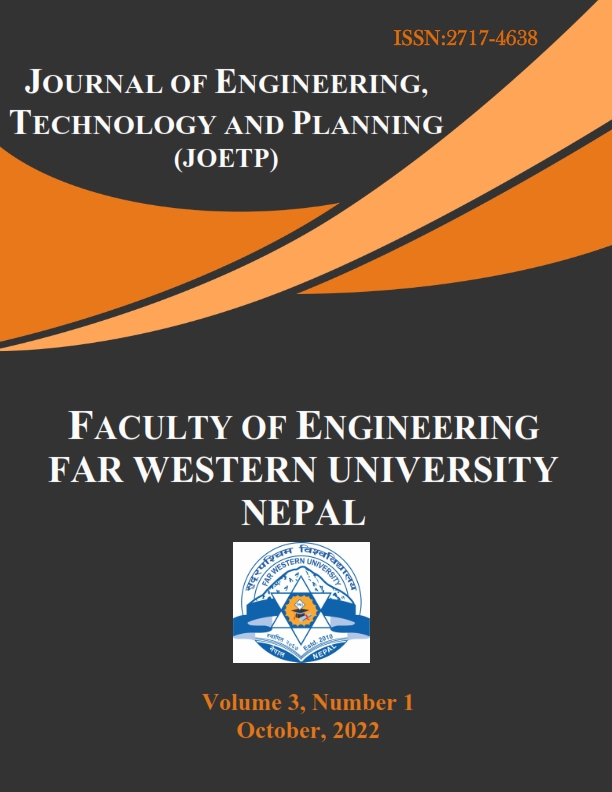Thickness and Cost Comparison of Cement Treated and Granular Base for Flexible Pavement: A Case Study of Pathlaiya-Nijgadh Section of East-West Highway of Nepal
DOI:
https://doi.org/10.3126/joetp.v3i1.49579Keywords:
Cement Treated Base, Pavement Thickness, Design Traffic, Cost Estimate and Pavement MaintenanceAbstract
A pavement is considered a multi-layer system that distributes the vehicular load over a large area and transfers it to the foundation. Flexible pavement is mainly deteriorated due to the failure of its layer as well as the subgrade soil. Resisting the vehicular load requires the appropriate thickness of the sub-base and base with optimization of cost. This study aims to find the effect of the cement-treated base on thickness, unit cost, and life cycle cost. Design traffic was estimated for 15 years design period with an annual traffic growth rate of 5% for the Pathlaiya-Nijgadh Section of the East-West Highway of Nepal. The thickness of the granular base and the cement-treated base was 500 mm and 357.43 mm for design traffic of 34.86 million standard axles (msa) and the total pavement thickness for design traffic of 34.86 msa was 590 mm and 457.43 mm respectively. The comparison of cost estimates for the base course revealed that there was a 5.63% reduction in the per km cost of the cement-treated base as compared to the granular base. The cement-treated base seems to be a viable alternative to the base course for road construction as compared to the granular base. The pavement maintenance using a Cement-Treated Base (CTB) was 47.31% more economical than pavement maintenance using a granular base course. The total cost including initial investment and the cost of the maintenance of the pavement construction using CTB was 24.39% lower than that of the granular base.
Downloads
Downloads
Published
How to Cite
Issue
Section
License
Copyright © Faculty of Engineering, Far Western University

